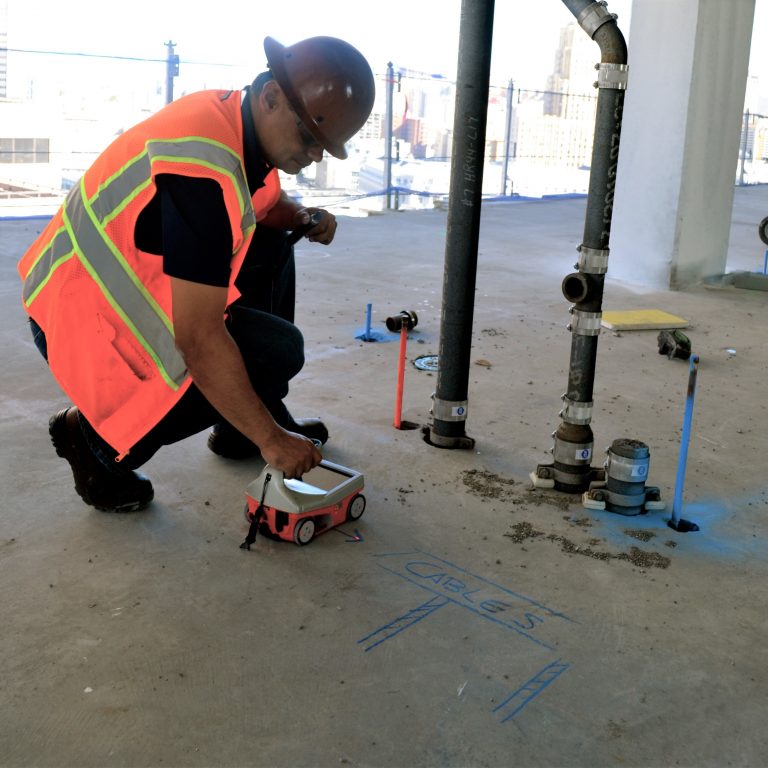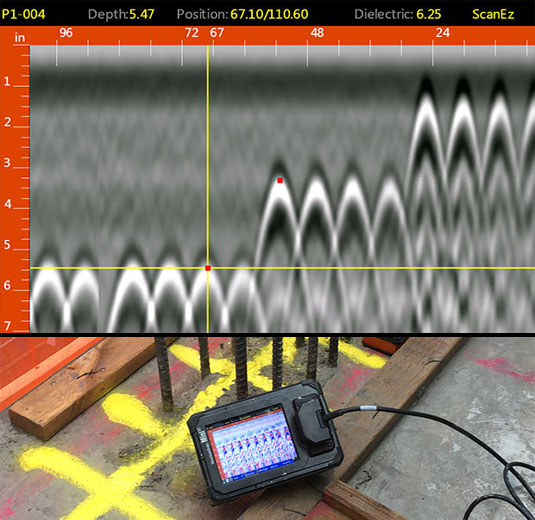Picking the Right Concrete Scanning Tools
Picking the Right Concrete Scanning Tools
Blog Article
Unveil the Transformative Power of Concrete Scanning in Maximizing Effectiveness and Safety And Security
Concrete scanning has actually arised as an essential tool in the building market, using exceptional advantages in boosting project efficiency and making sure safety and security criteria. The transformative power of concrete scanning lies in its ability to supply in-depth understandings and real-time information, reinventing just how tasks are prepared and implemented.
Value of Concrete Scanning
Making certain the structural integrity and safety and security of construction projects starts with the important action of carrying out complete concrete scanning. Concrete scanning is a non-destructive method utilized to detect and map subsurface components within concrete structures.
Furthermore, concrete scanning assists in maximizing task timelines and spending plan by staying clear of unexpected costs and delays that may arise due to unexpected blockages within the concrete. Eventually, spending in detailed concrete scanning is an aggressive method that boosts both effectiveness and security in building tasks.
Exactly How Concrete Scanning Functions
Concrete scanning runs as an essential tool in building and construction tasks by employing advanced technologies to detect and map subsurface elements without causing structural damage. Ground Penetrating Radar (GPR) and Electromagnetic Induction (EMI) are two primary approaches utilized in concrete scanning. GPR jobs by producing high-frequency radar pulses right into the surface area, which get better when they run into subsurface items or spaces. The time considered the signal to return suggests the depth and location of the objects. EMI, on the various other hand, uses electro-magnetic areas to recognize variations in product make-ups, such as recognizing rebar or channels within concrete frameworks.
Throughout the scanning procedure, the information collected is evaluated in real-time, enabling instant recognition of prospective threats or obstacles beneath the surface. By employing these sophisticated technologies, concrete scanning substantially minimizes the threat of pricey problems and injuries on building websites.
Advantages of Concrete Scanning
Making use of innovative scanning technologies in construction jobs uses a multitude of advantages, enhancing both effectiveness and safety and security on-site. One of the key benefits of concrete scanning is the capacity to find and find embedded objects such as rebar, post-tension cables, and conduits accurately. By identifying these aspects before exploration or reducing into concrete structures, the danger of unexpected strikes is dramatically minimized, stopping prospective injuries to employees and damages to the structure itself. Concrete scanning helps in preparation and creating much more efficiently, as it provides specific info about the area and depth of structural parts.

Case Studies: Concrete Scanning Success

In an additional instance, a building and construction business used 3D concrete scanning to examine the problem of aging concrete structures in a historic building. The detailed scans provided valuable understandings into the extent of deterioration and helped focus on maintenance initiatives effectively. By proactively addressing locations of worry determined through scanning, the business was able to extend the lifespan of the framework and make sure resident safety.
These case studies highlight the transformative power of concrete scanning in improving effectiveness, precision, and safety and security in construction projects.
Executing Concrete Scanning in Projects
Carrying out innovative scanning modern technologies during building jobs has ended up being progressively essential for enhancing precision and websites security. By incorporating concrete scanning right into task preparation and implementation, building and construction groups can identify potential hazards, such as rebar or post-tension cables, concealed within concrete frameworks. This proactive method decreases the threat of mishaps, delays, and pricey rework, ultimately leading to much more efficient task timelines and budget plans.
To implement concrete scanning effectively, task managers should work together closely with skilled scanning specialists to figure out the most suitable scanning methods for the details job needs. Involving scanning professionals from the early phases of a project makes it possible for the group to create comprehensive scanning strategies that attend to essential locations of worry and guarantee comprehensive information collection.
Additionally, incorporating concrete scanning right into routine project operations can enhance decision-making procedures, as real-time check data supplies immediate understandings into the problem of concrete structures - Concrete Scanning. This data-driven approach assists in notified problem-solving and makes it possible for teams to make adjustments immediately, fostering a society of effectiveness and safety and security throughout the job lifecycle

Final Thought
To conclude, concrete scanning plays an important function in enhancing efficiency and security in building and construction projects. By using innovative modern technology to discover and map out underlying frameworks within concrete, this process helps to prevent continue reading this costly errors, make sure architectural honesty, and minimize dangers on website. With the capacity to uncover covert components and provide precise information, concrete scanning proves to be a useful device for optimizing job end results and making the most of total success.
Concrete scanning is a non-destructive approach made use of to detect and map subsurface elements within concrete frameworks. In addition, concrete scanning aids in enhancing task timelines and budget plan by preventing unforeseen costs and hold-ups that may develop due to unforeseen obstructions within the concrete. One significant situation study includes a massive renovation task where concrete scanning played an important duty in ensuring task success.In visit this web-site another instance, a building firm made use of 3D concrete scanning to examine the condition of maturing concrete structures in a historic structure. By incorporating concrete scanning right into job preparation and execution, building groups can identify prospective threats, such as rebar or post-tension cable televisions, concealed within concrete structures.
Report this page